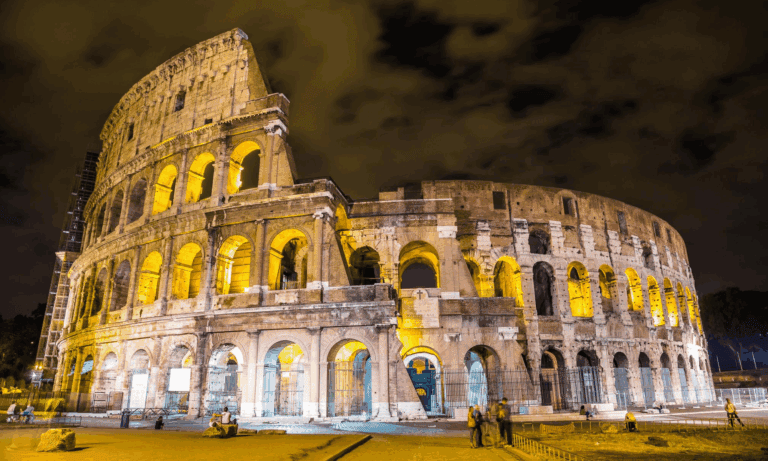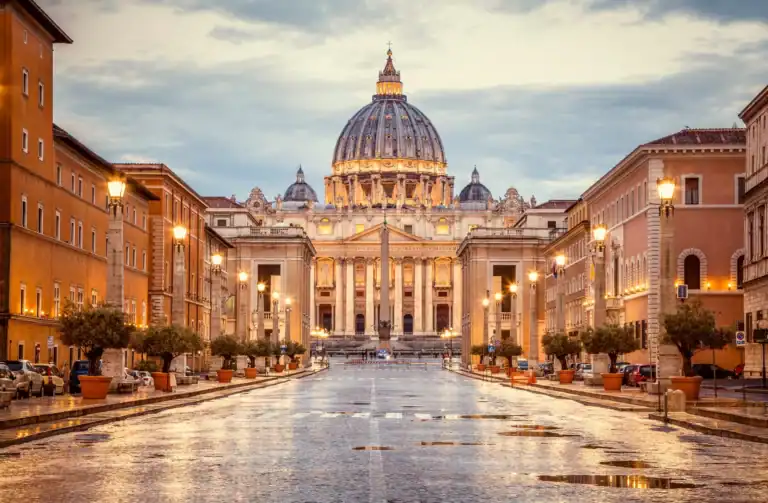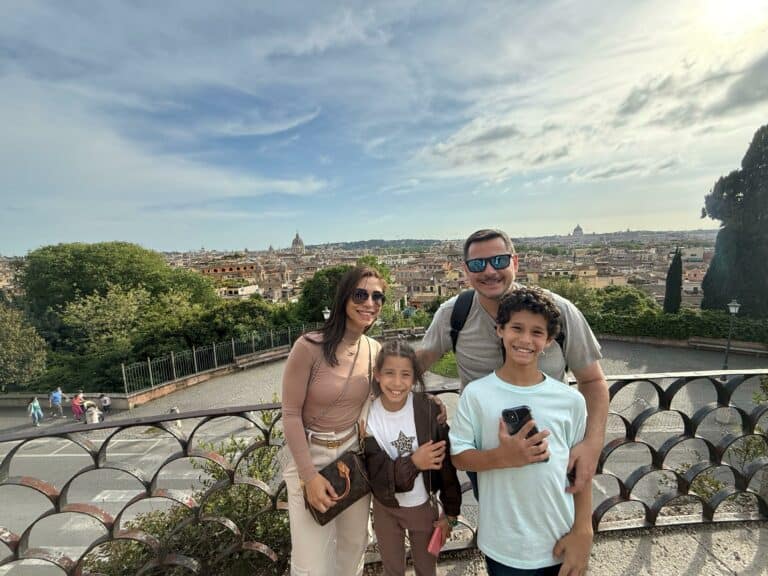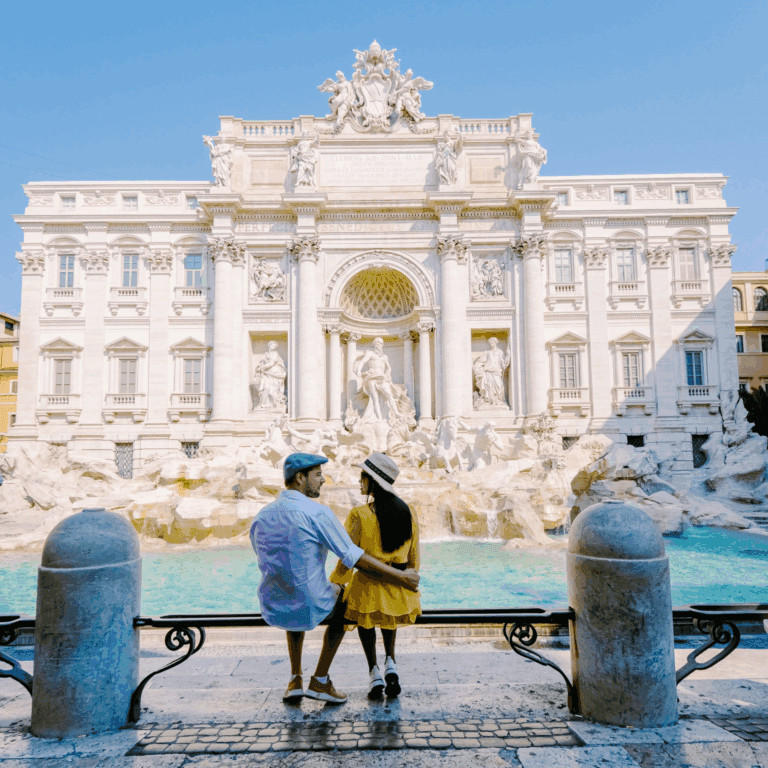Traveling to Italy is not just about admiring the ancient ruins of Rome, gliding through the canals of Venice, or tasting world-class pasta in Bologna. It’s about immersing yourself in the culture and connecting with locals in a way that feels authentic and warm. Speaking even a few Italian phrases can completely change the way Italians respond to you — transforming brief transactions into moments of real human connection.
This article is your complete guide to 30 essential Italian travel phrases, each explained with meaning, pronunciation, context, cultural tips, and multiple real-life examples. Whether you’re a first-time visitor, a seasoned traveler, or a digital nomad working from Florence, these phrases will help you navigate daily life in Italy with ease and confidence
Why learning Italian travel phrases makes a difference
Learning just a few key Italian expressions can dramatically improve your travel experience in several ways:
-
Better interactions with locals – Italians appreciate effort. Even if your accent isn’t perfect, trying to speak their language shows respect.
-
Practical communication – Whether ordering food, buying train tickets, or asking for directions, the right phrase saves time and avoids confusion.
-
Cultural enrichment – Language opens the door to understanding traditions, humor, and social etiquette.
-
Memorable connections – A short exchange in Italian often leads to insider tips, special treatment, or simply a more personal experience.
For maximum benefit, we’ll also provide pronunciation tips so you can be understood, and alternative expressions so you have flexibility in conversation.
Common Italian travel phrases
Each phrase below is presented in Italian, followed by the English meaning, a pronunciation guide, multiple usage examples, a cultural note, and related expressions.
1. Ciao – hello / goodbye
Meaning: A casual, friendly greeting that also works as “goodbye.”
Pronunciation: “Chow”
Example 1: Ciao, come stai oggi? (Hi, how are you today?)
Example 2: Ciao, ci vediamo più tardi. (Bye, see you later.)
Travel scenario: Greeting a fellow traveler in a hostel or saying goodbye to a friendly shopkeeper.
Cultural note: Use Ciao with people you know or in informal situations. For more formality, choose Buongiorno or Buonasera.
Related phrases: Salve (hello, semi-formal), Arrivederci (goodbye, formal).
2. Buongiorno – good morning / good day
Meaning: A polite, formal way to greet someone before the evening.
Pronunciation: “Bwon-jor-no”
Example 1: Buongiorno, vorrei un cappuccino e una brioche. (Good morning, I’d like a cappuccino and a croissant.)
Example 2: Buongiorno, come sta oggi? (Good morning, how are you today?)
Travel scenario: Entering a café, hotel, or shop in the morning.
Cultural note: Generally used until late afternoon. After that, switch to Buonasera.
Related expressions: Buona giornata (have a good day).
3. Buonasera – good evening
Meaning: A polite evening greeting.
Pronunciation: “Bwona-seh-ra”
Example 1: Buonasera, avete un tavolo libero? (Good evening, do you have a free table?)
Example 2: Buonasera a tutti! (Good evening, everyone!)
Travel scenario: Arriving at a restaurant for dinner or checking into a hotel at night.
Cultural note: Used from late afternoon until bedtime.
4. Grazie – thank you
Meaning: A universal expression of gratitude.
Pronunciation: “Grah-tsyeh”
Example 1: Grazie per il consiglio. (Thank you for the advice.)
Example 2: Grazie mille per l’aiuto. (Thanks a lot for the help.)
Travel scenario: Thanking a waiter, taxi driver, or helpful stranger.
Related phrases: Molte grazie (many thanks).
5. Prego – you’re welcome / please (contextual)
Meaning: Can mean “you’re welcome,” “please,” or “after you” depending on context.
Pronunciation: “Preh-go”
Example 1: Prego, si accomodi. (You’re welcome, please have a seat.)
Example 2: Prego, può passare prima lei. (Please, go ahead.)
Travel scenario: Hearing it from a waiter when they bring your food or when someone holds the door for you.
Cultural note: A highly versatile word in Italian politeness.
6. Per favore – please
Meaning: Polite request marker.
Pronunciation: “Pehr fah-voh-reh”
Example 1: Un biglietto per Milano, per favore. (One ticket to Milan, please.)
Example 2: Per favore, mi porti un po’ d’acqua. (Please bring me some water.)
Travel scenario: Ordering at a restaurant, requesting services.
Related expressions: Per piacere (please, slightly softer tone).
7. Mi scusi – excuse me (formal)
Meaning: A polite way to get someone’s attention or to apologize.
Pronunciation: “Mee skoo-zee”
Example 1: Mi scusi, dov’è il museo? (Excuse me, where is the museum?)
Example 2: Mi scusi, non volevo urtarla. (Excuse me, I didn’t mean to bump into you.)
Travel scenario: Politely stopping a passerby to ask for directions in a busy street.
Cultural note: Use Mi scusi with strangers or in formal situations. For friends or informal settings, use Scusa.
Related phrases: Permesso (excuse me, when passing through a crowd).
8. Parla inglese? – do you speak English?
Meaning: A direct but polite way to check if someone understands English.
Pronunciation: “Par-lah een-gleh-zeh”
Example 1: Mi scusi, parla inglese? (Excuse me, do you speak English?)
Example 2: Parla inglese o francese? (Do you speak English or French?)
Travel scenario: Asking a hotel receptionist if they can assist you in English before starting a conversation.
Cultural note: Always start with Italian; it shows courtesy even if the conversation continues in English.
Related phrases: Capisce l’inglese? (Do you understand English?).
9. Non capisco – I don’t understand
Meaning: A clear way to indicate confusion or lack of comprehension.
Pronunciation: “Non cah-pee-skoh”
Example 1: Mi dispiace, non capisco. (I’m sorry, I don’t understand.)
Example 2: Non capisco bene, può ripetere? (I don’t understand well, can you repeat?)
Travel scenario: At a market when a vendor speaks too quickly for you to follow.
Cultural note: A softer variation is Non ho capito (I didn’t understand).
Related phrases: Può ripetere, per favore? (Can you repeat, please?).
10. Dov’è il bagno? – where is the bathroom?
Meaning: Essential for finding facilities quickly in public places.
Pronunciation: “Doh-veh eel bah-nyoh”
Example 1: Mi scusi, dov’è il bagno più vicino? (Excuse me, where is the nearest bathroom?)
Example 2: Per favore, dov’è il bagno degli ospiti? (Please, where is the guest bathroom?)
Travel scenario: Asking in a café, train station, or museum.
Cultural note: In Italy, public restrooms may require a small fee. Keep coins handy.
11. Un biglietto, per favore – one ticket, please
Meaning: A basic request for transportation or event entry.
Pronunciation: “Oon bee-lyet-toh, pehr fah-voh-reh”
Example 1: Un biglietto per Roma, per favore. (One ticket to Rome, please.)
Example 2: Vorrei un biglietto per la mostra, per favore. (I’d like one ticket for the exhibition, please.)
Travel scenario: Buying a train ticket at a station counter.
Cultural note: In smaller towns, ticket offices may close early — use automatic machines if available.
Related phrases: Due biglietti (two tickets), Andata e ritorno (round trip).
12. Quanto costa? – how much does it cost?
Meaning: Essential for shopping, bargaining, or comparing prices.
Pronunciation: “Kwahn-toh koh-stah”
Example 1: Quanto costa questo gelato? (How much does this ice cream cost?)
Example 2: Mi può dire quanto costa in totale? (Can you tell me how much it costs in total?)
Travel scenario: Asking at markets, shops, or when booking a tour.
Cultural note: In some markets, bargaining is acceptable, but in stores prices are fixed.
Related phrases: È caro? (Is it expensive?).
13. Il conto, per favore – the bill, please
Meaning: Used to request your check at a restaurant.
Pronunciation: “Eel kohn-toh, pehr fah-voh-reh”
Example 1: Il conto, per favore. Grazie. (The bill, please. Thank you.)
Example 2: Possiamo avere il conto, per favore? (Can we have the bill, please?)
Travel scenario: At a trattoria after finishing your meal.
Cultural note: In Italy, waiters won’t bring the bill until you ask — lingering over a meal is part of the culture.
14. Ho bisogno di aiuto – I need help
Meaning: A straightforward way to ask for assistance.
Pronunciation: “Oh bee-zon-yoh dee ah-yoo-toh”
Example 1: Ho bisogno di aiuto, il mio telefono non funziona. (I need help, my phone isn’t working.)
Example 2: Ho bisogno di aiuto per trovare il mio albergo. (I need help finding my hotel.)
Travel scenario: When lost in a city or in an emergency situation.
Cultural note: Italians are generally willing to help, especially if approached politely.
15. Che ora è? – what time is it?
Meaning: Simple but useful for transportation schedules and meeting times.
Pronunciation: “Ke oh-rah eh”
Example 1: Che ora è, per favore? (What time is it, please?)
Example 2: Scusi, che ora è adesso? (Excuse me, what time is it now?)
Travel scenario: Waiting for a bus or confirming the time for a reservation.
Cultural note: Italians use the 24-hour clock for official times — 18:00 means 6:00 PM.
16. Posso avere…? – can I have…?
Meaning: A polite way to request something in shops, cafés, or restaurants.
Pronunciation: “Pohs-soh ah-veh-reh”
Example 1: Posso avere un bicchiere d’acqua? (Can I have a glass of water?)
Example 2: Posso avere il menù, per favore? (Can I have the menu, please?)
Travel scenario: Ordering drinks, asking for extra towels at a hotel, or requesting items in a shop.
Cultural note: Adding per favore makes your request sound even more courteous.
Related phrases: Vorrei… (I would like…), Mi dia… (Give me…).
17. Come si chiama? – what is your name?
Meaning: The formal way to ask someone’s name.
Pronunciation: “Koh-meh see kyah-mah”
Example 1: Come si chiama lei? (What is your name, sir/ma’am?)
Example 2: Scusi, come si chiama? (Excuse me, what is your name?)
Travel scenario: Meeting someone in a formal setting, such as a guide, hotel staff, or event host.
Cultural note: Use in formal situations; with friends or younger people, say Come ti chiami?
Related phrases: E lei? (And you?).
18. Mi chiamo… – my name is…
Meaning: Used when introducing yourself.
Pronunciation: “Mee kyah-moh”
Example 1: Mi chiamo Laura, piacere di conoscerla. (My name is Laura, nice to meet you.)
Example 2: Ciao, mi chiamo Marco. (Hi, my name is Marco.)
Travel scenario: Introducing yourself to fellow travelers or locals.
Cultural note: Italians often follow introductions with a handshake or a kiss on both cheeks in informal settings.
19. Piacere di conoscerti – nice to meet you
Meaning: An expression of pleasure upon meeting someone.
Pronunciation: “Pya-cheh-reh dee koh-no-sher-tee”
Example 1: Piacere di conoscerti, Marco. (Nice to meet you, Marco.)
Example 2: Piacere di conoscerla, signora Rossi. (Nice to meet you, Mrs. Rossi – formal.)
Travel scenario: Greeting your tour guide, new acquaintances, or hosts.
Cultural note: The formal version is Piacere di conoscerla.
20. Sto cercando… – I am looking for…
Meaning: A versatile phrase for finding places or objects.
Pronunciation: “Stoh cher-kahn-doh”
Example 1: Sto cercando la stazione centrale. (I am looking for the central station.)
Example 2: Sto cercando una farmacia aperta. (I am looking for an open pharmacy.)
Travel scenario: Navigating through a city or asking for help from locals.
Cultural note: Combine with Dov’è for extra clarity: Sto cercando dov’è….
21. Buon appetito – enjoy your meal
Meaning: A friendly expression said before eating.
Pronunciation: “Bwon app-eh-tee-toh”
Example 1: Buon appetito a tutti! (Enjoy your meal, everyone!)
Example 2: Grazie, buon appetito anche a lei. (Thank you, enjoy your meal too.)
Travel scenario: At a restaurant, picnic, or dinner party.
Cultural note: Italians say it before starting a meal, even with strangers at nearby tables.
22. Salute! – cheers! / bless you
Meaning: Used during a toast or after someone sneezes.
Pronunciation: “Sah-loo-teh”
Example 1: Salute! Alla nostra vacanza in Italia. (Cheers! To our vacation in Italy.)
Example 2: Salute! (Bless you, after a sneeze.)
Travel scenario: Raising glasses at a dinner or wine tasting.
Cultural note: Maintain eye contact while clinking glasses—it’s considered good luck.
23. Arrivederci – goodbye (formal)
Meaning: A polite farewell.
Pronunciation: “Ah-ree-veh-der-chee”
Example 1: Arrivederci, ci vediamo domani. (Goodbye, see you tomorrow.)
Example 2: Arrivederci e buona serata. (Goodbye and have a good evening.)
Travel scenario: Leaving a shop, restaurant, or hotel.
Cultural note: Informal versions are Ciao and A presto.
24. Va bene – okay / all right
Meaning: Expresses agreement or acceptance.
Pronunciation: “Vah beh-neh”
Example 1: Va bene, andiamo. (All right, let’s go.)
Example 2: Va bene, lo prendo. (Okay, I’ll take it.)
Travel scenario: Agreeing to a meeting time, confirming an order.
Cultural note: Often shortened to Va bene in casual speech.
25. Mi può aiutare? – can you help me?
Meaning: A direct request for assistance.
Pronunciation: “Mee pwoh ah-yoo-tah-reh”
Example 1: Mi può aiutare con la valigia? (Can you help me with the suitcase?)
Example 2: Mi può aiutare a trovare questo indirizzo? (Can you help me find this address?)
Travel scenario: Asking locals for directions or help with luggage.
26. È lontano? – is it far?
Meaning: Useful for checking distances before setting off.
Pronunciation: “Eh lon-tah-no”
Example 1: È lontano il museo? (Is the museum far?)
Example 2: È lontano a piedi? (Is it far on foot?)
Travel scenario: Determining whether to walk or take transport.
Cultural note: Italians sometimes underestimate walking distances—double-check on a map.
27. Ho una prenotazione – I have a reservation
Meaning: Essential for hotels, restaurants, and tours.
Pronunciation: “Oh oo-nah preh-no-tah-tsyo-neh”
Example 1: Ho una prenotazione a nome Rossi. (I have a reservation under Rossi.)
Example 2: Ho una prenotazione per due persone. (I have a reservation for two people.)
Travel scenario: Checking in at a hotel or confirming a booking at a restaurant.
28. Qual è il tuo numero di telefono? – what is your phone number?
Meaning: For exchanging contact details.
Pronunciation: “Kwahl eh eel too-oh noo-meh-roh dee teh-leh-foh-no”
Example 1: Qual è il suo numero di telefono? (What is your phone number? – formal)
Example 2: Mi lasci il suo numero di telefono. (Please give me your phone number.)
Travel scenario: Networking with locals, arranging meetups.
29. Parli più lentamente, per favore – please speak more slowly
Meaning: Helps you follow conversations better.
Pronunciation: “Par-lee pyoo len-ta-men-teh, pehr fah-voh-reh”
Example 1: Parli più lentamente, per favore, non capisco bene. (Please speak more slowly, I don’t understand well.)
Example 2: Può parlare più lentamente? (Can you speak more slowly?)
Travel scenario: Useful in markets, museums, or with taxi drivers.
30. Dove posso trovare…? – where can I find…?
Meaning: Useful for finding specific places or services.
Pronunciation: “Doh-veh pohs-soh troh-vah-reh”
Example 1: Dove posso trovare un taxi? (Where can I find a taxi?)
Example 2: Dove posso trovare una farmacia aperta? (Where can I find an open pharmacy?)
Travel scenario: Asking for directions to a service, store, or attraction.
Words to use in a museum
-
Mi scusi, dov’è la sala…? – Excuse me, where is the … room?
Pronunciation: Mee skoo-zee doh-veh lah sah-lah…
Use when asking directions to a gallery or exhibit. -
Posso scattare foto qui? – Am I allowed to take photos here?
Pronunciation: Pohs-soh skah-tah-reh FOH-toh kwoo-ee?
Use when you’re unsure if photography is permitted. -
C’è una guida in inglese? – Is there a guide in English?
Pronunciation: Cheh oo-nah GWEE-dah een een-GLAY-seh?
Use when asking for tours or guides in English. -
Dove sono i bagni? – Where are the restrooms?
Pronunciation: DOH-veh SOH-noh ee BAH-nyee?
*Use for basic facilities questions inside museums. -
Quanto costa il biglietto? – How much is the ticket?
Pronunciation: KWAHN-toh KOH-stah eel bee-LYET-toh?
Use at the entrance or ticket desk. -
C’è un’audioguida? – Is there an audio guide?
Pronunciation: Cheh oon ow-dee-oh GWEE-dah?
Use to ask for self-guided devices.
Words to use in a restaurant
-
Un tavolo per due, per favore. – A table for two, please.
Pronunciation: Oon TAH-voh-lo pehr DOO-eh, pehr fah-VOH-reh.
Use when arriving at a restaurant. -
Il menù, per favore. – The menu, please.
Pronunciation: Eel meh-NOO pehr fah-VOH-reh.
Use to ask for the menu. -
Cosa mi consiglia? – What do you recommend?
Pronunciation: KOH-zah mee kon-SEEL-yah?
Use when you want the waiter’s suggestion. -
Vorrei… – I would like…
Pronunciation: Vor-RAY.
Use to order food or drinks (e.g., “Vorrei una pizza margherita”). -
Acqua naturale o frizzante? – Still or sparkling water?
Pronunciation: AHK-kwah nah-too-RAH-leh oh freet-ZAHN-teh?
Common question from servers. -
Il conto, per favore. – The bill, please.
Pronunciation: Eel KON-toh pehr fah-VOH-reh.
Use at the end of your meal. -
Era delizioso! – It was delicious!
Pronunciation: EH-rah deh-lee-TSYO-soh.
Use to compliment the food.
Words to use in a hotel
-
Ho una prenotazione a nome… – I have a reservation under the name…
Pronunciation: Oh OO-nah preh-noh-tah-TSYO-neh ah NOH-meh…
Use when checking in. -
A che ora è il check-in / check-out? – What time is check-in/check-out?
Pronunciation: Ah keh OH-rah eh eel chek-EEN / chek-OUT?
Use to confirm timings. -
Mi può aiutare con i bagagli? – Can you help me with the luggage?
Pronunciation: Mee pwò ah-yoo-TAH-reh con ee bah-GALL-yee?
Use when you need assistance with bags. -
C’è la connessione Wi-Fi? – Is there Wi-Fi connection?
Pronunciation: Cheh lah kon-nes-SYOH-neh wee-fye?
Use to ask about internet access. -
A che ora è la colazione? – What time is breakfast?
Pronunciation: Ah keh OH-rah eh lah koh-lah-TSYO-neh?
Use for breakfast times. -
Può chiamarmi un taxi? – Can you call me a taxi?
Pronunciation: Pwoh kyah-MAR-mee oon TAK-see?
Use when needing transport. -
Ho bisogno di un altro asciugamano. – I need another towel.
Pronunciation: Oh bee-ZOH-nyoh dee oon AL-troh ah-shoo-gah-MAH-noh.
Use to request extra amenities.
Numbers in italian for travelers
Numbers are a core part of daily interactions in Italy — whether you’re paying for a coffee, negotiating at a market, confirming a train platform, or understanding an address. Knowing the basics will make transactions smoother and help you feel more confident.
-
Uno – One
-
Due – Two
-
Tre – Three
-
Quattro – Four
-
Cinque – Five
-
Dieci – Ten
-
Ventuno – Twenty-one
-
Cento – One hundred
Travel Tip: Italians often speak quickly, so listen for context when hearing numbers in markets, cafés, or taxi rides. For example, “Sono cinque euro” means “It’s five euros,” and “Binario quattro” means “Platform four” at a train station.
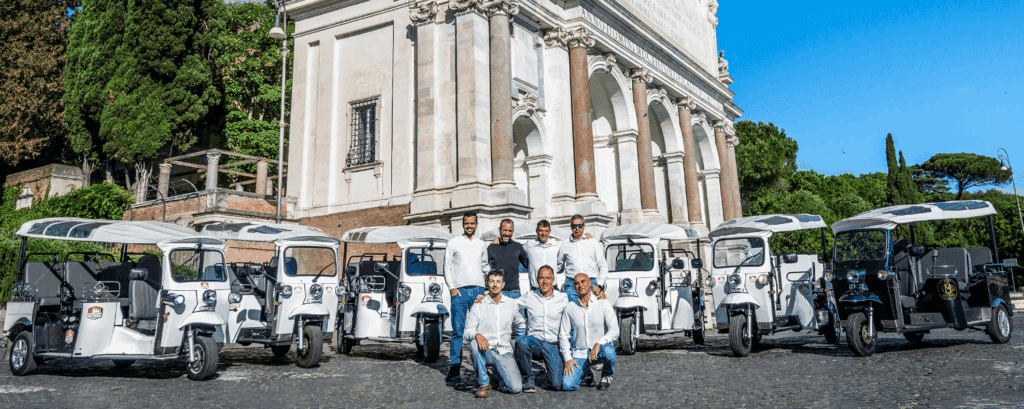
We speak your language
Traveling in a country where you don’t speak the language can sometimes feel overwhelming. That’s why ETukToursRome is here to make your journey smoother. Our team is fluent in 7 languages, ensuring that no matter where you’re from, we can communicate with you clearly and comfortably.
When you travel with ETukToursRome, either on a Golf Cart tour, an Etuk or Ape Calessino tour, you’ll always have someone by your side who can understand your needs, translate important details, and make sure nothing gets lost in communication. From arranging transportation to explaining cultural nuances, we’ll speak your language so you can focus on enjoying your journey stress-free.
Because with us, travel is about discovery, connection, and creating great memories — not about worrying over misunderstandings.
Tips for Using Italian Phrases Effectively
To make the most of your Italian phrase knowledge, try integrating these habits into your daily travel routine:
-
Practice daily before your trip – Even 5–10 minutes a day can boost confidence.
-
Listen to native pronunciation – YouTube, podcasts, and Italian films help train your ear.
-
Use hand gestures – Italians are famously expressive; pairing words with gestures often makes communication smoother.
-
Be polite – Always add Per favore (please) and Grazie (thank you) to your requests.
-
Don’t fear mistakes – Italians generally appreciate the effort more than perfect grammar.
Final Words
A handful of well-chosen Italian phrases can make your trip to Italy not only more comfortable but also far more memorable and culturally rich. Whether you’re ordering a steaming espresso in a Naples café, wandering through the rolling hills of a Tuscan vineyard, or navigating the bustling metro in Milan, these expressions bridge the gap between visitor and local.
Every phrase you learn is a key to unlocking authentic moments — the warm smile of a shopkeeper, the extra detail from a tour guide, or the friendly conversation with a stranger on a train.
Buon viaggio! May every conversation you have lead to a deeper experience of Italy’s charm, warmth, and hospitality.

